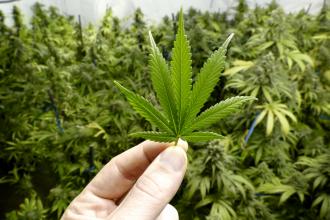More reefer madness
The federal government is conducting hearings on the legal status of marijuana that could result in a marked increase in the prevalence of substance use disorders. It seems that the predominant voice being heard is that of lobbyists in favor of legalization, decriminalization, and medicalization. As a medical educator familiar with the voluminous literature on addictions, I am concerned. Of course, making criminals of people for inhaling the smoke of a common weed is irrational. And yes, by legalizing and regulating drugs such as tobacco and alcohol we eliminate the black market and monetary incentive for criminals.
What’s needed now is an exploration of the other side of the argument. This brief column will not be balanced. As a person recovering from addiction (yes, one of the drugs was marijuana), a physician specializing in addictions, and a father of teens, I am biased. But we physicians need to offer some cautionary notes if the factors that determine drug use in Canada are about to be changed.
The cannabinoid receptor and its natural ligand, anandemide, has been isolated. A cannabinoid antagonist has been developed that, when administered to marijuana dependent rats, precipitates immediate withdrawal syndrome. There is no question as to whether marijuana is addictive by whatever set of diagnostic criteria one chooses. Its addictive potential is about the same as alcohol; 8% to15% of adults who smoke it will develop addiction or dependence.
Though 9DTHC has pharmacological properties as an analgesic, antinausiant, or appetite stimulant, numerous expert reviews, including the Institute of Medicine and the Canadian Society of Addiction Medicine, conclude that smoked marijuana does not meet the test of safety, efficacy, or predictable delivery required for approval as a prescription drug.
There are safer, more effective treatments available for all conditions for which marijuana is being proposed. Smoked marijuana has been documented to interfere with cellular immunity and to introduce fungal spores such as aspergillus into the airways of hosts who may be already immunocompromised. Smoked marijuana releases the same carcinogens found in smoked tobacco. Chronic cannabinoid use is known to cause psychiatric illnesses and to exacerbate pre-existing psychiatric disease. Though its adverse effects on the fetus are unknown, cannabis smoking has been shown to cause small-for-date and premature babies.
But the preceding concerns are less serious than the risk posed to adolescents by this drug. Marijuana use by BC secondary students has increased from 25% in 1992 to 40% in 1999. Imaging studies, cognitive tests, and psychometric testing show marijuana impairs function of those parts of the brain responsible for memory, learning, and coordination. Even casual use of marijuana causes demonstrable learning deficits. Adolescents who use marijuana are much more likely to drop out of school. Although proof of the gateway effect is impossible, adults addicted to heroin or cocaine are many times more likely than age-matched peers to have smoked pot in early adolescence. Introduction of a fat-soluble, long-acting drug that interferes with crucial learning, emotional maturation, and identity formation into the adolescent brain can have long-lasting consequences.
Use of any mood-altering substance by a society is influenced by a dynamic balance of many factors including legal status, stigma, societal norms, peer group behavior, availability, pricing, perceived benefits, and potential consequences. We know from experience the effects of manipulating some of these variables. Contrary to current myth, prohibition did work, in that there was a dramatic reduction of documented alcohol-related morbidity and mortality during the prohibition years. Holland saw a dramatic increase in adolescent marijuana use when defacto decriminalization of marijuana was introduced, while North American youth were decreasing their pot smoking. The argument that alcohol and tobacco are more dangerous than marijuana, when used as justification for legalization, falls flat if we consider the price we have paid for these other drugs. Should we now add another?
—Ray Baker, MD
Chair, Committee on Addiction Medicine

